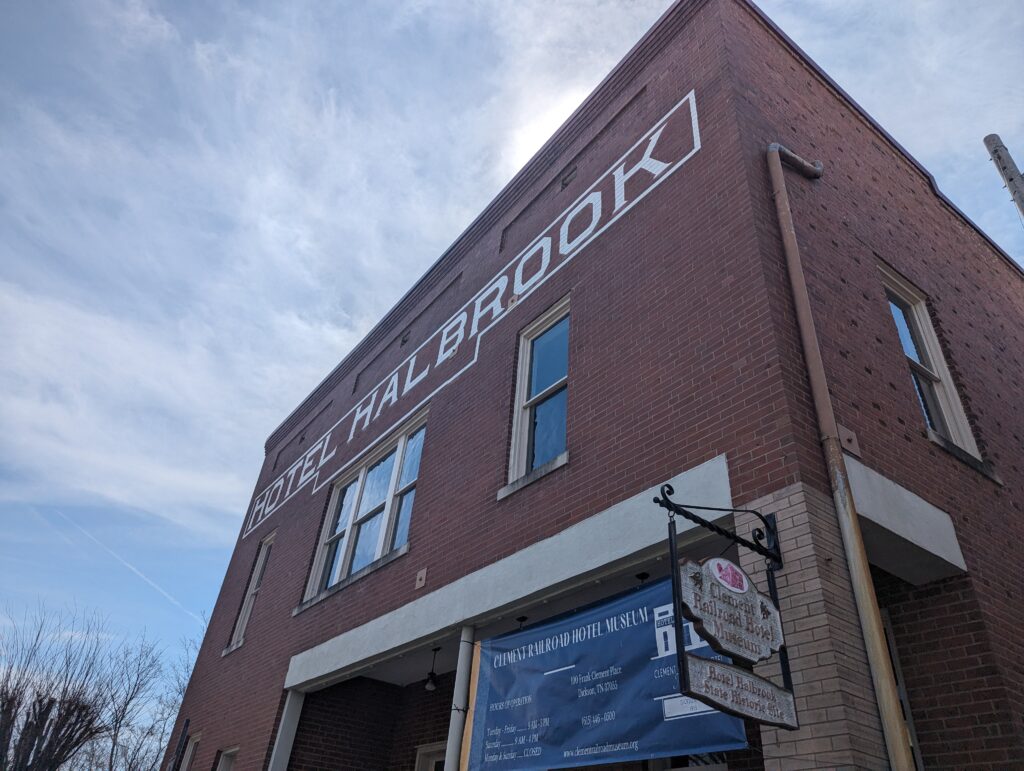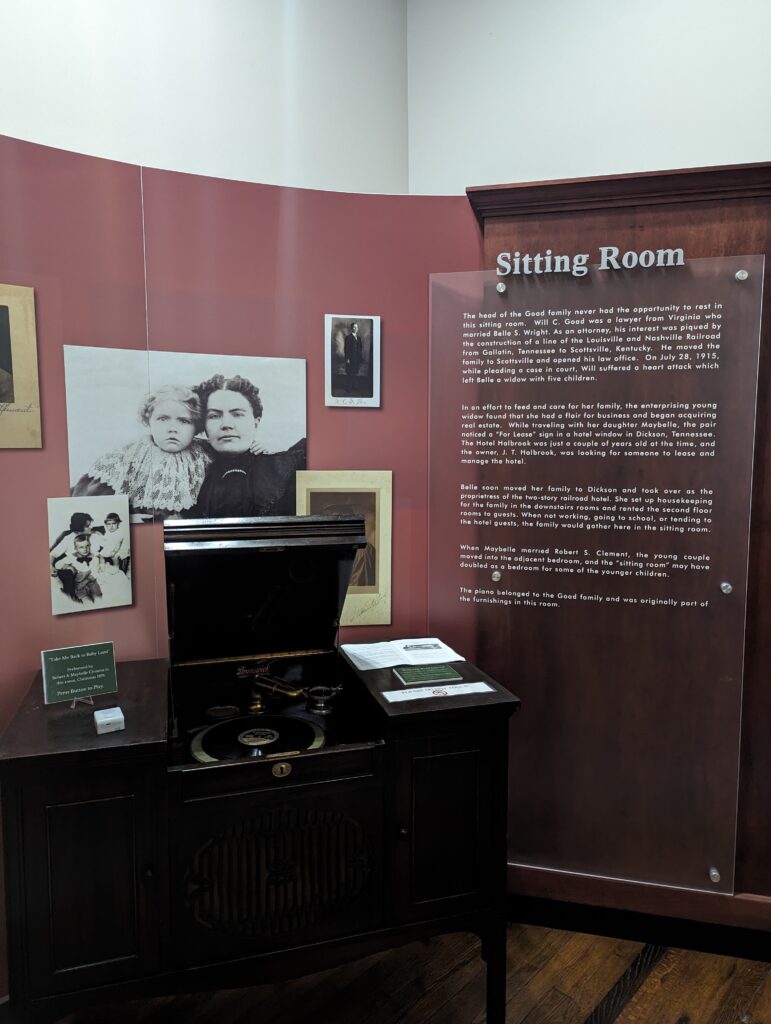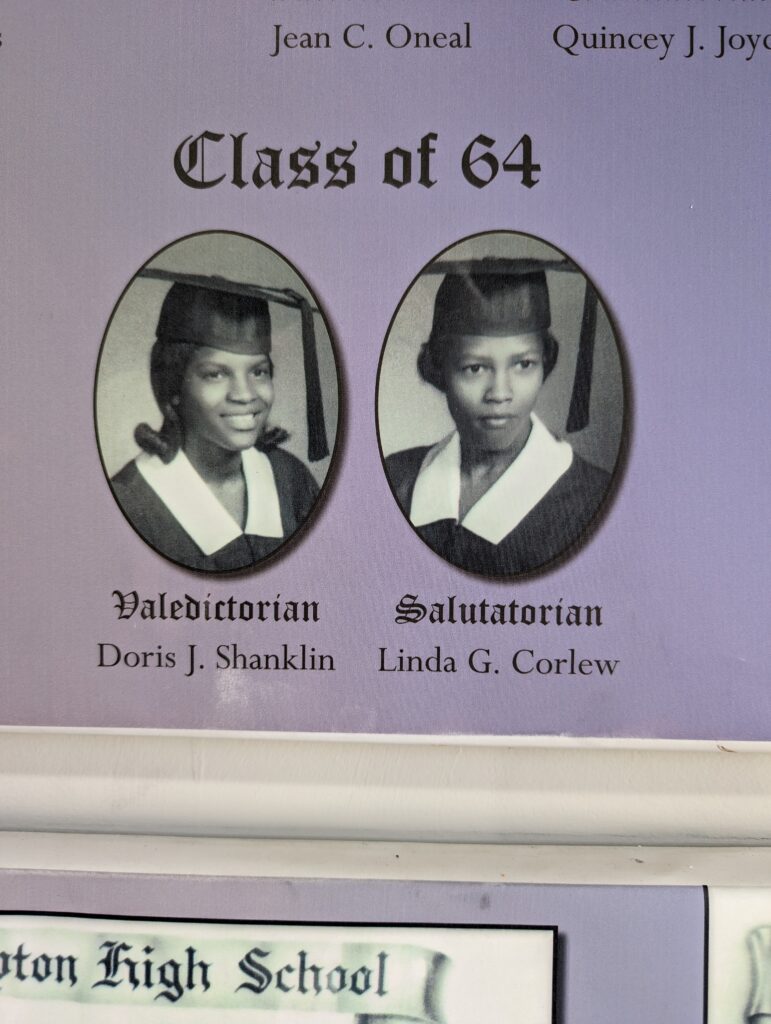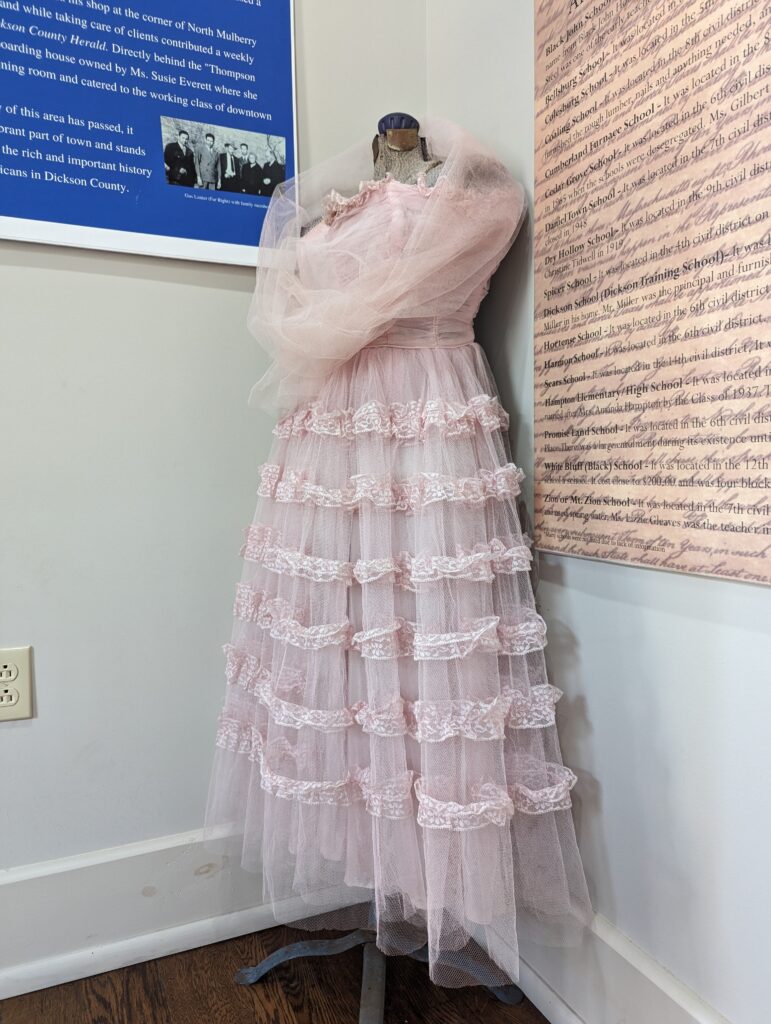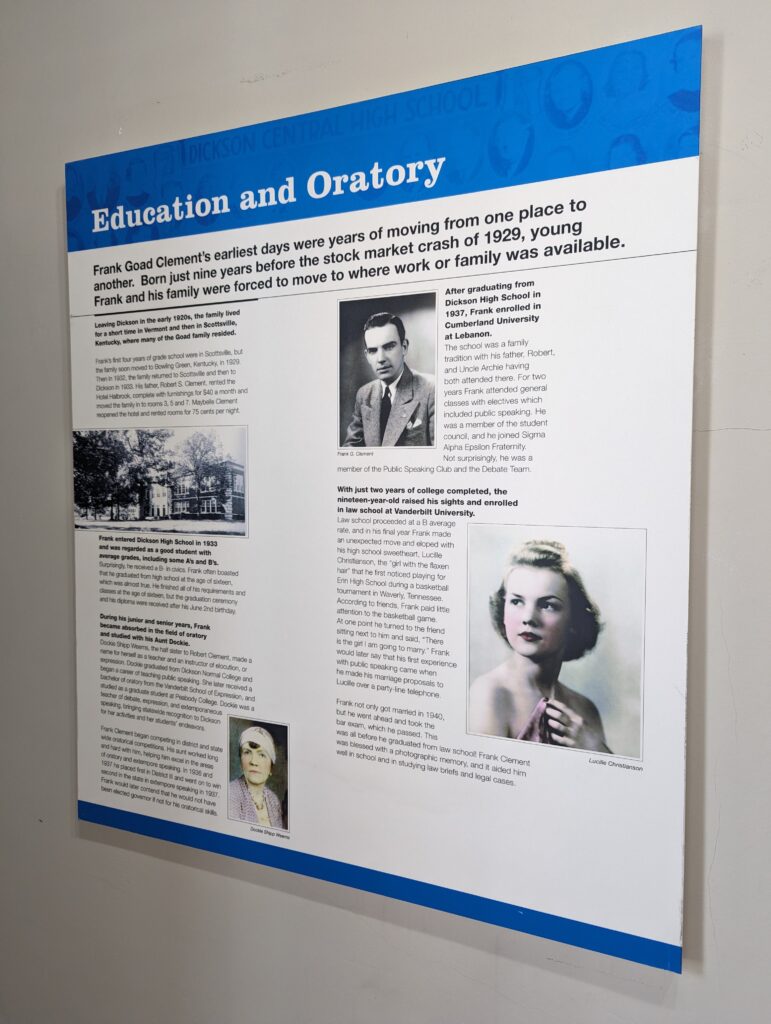Clement Railroad Hotel Museum: Giving Voice to Dickson County’s Women
The Clement Railroad Hotel Museum (CRHM) in Downtown Dickson, Tennessee, tells the stories of Dickson County, with a special emphasis on the life and legacy of Tennessee Governor Frank G. Clement who was born in the hotel. The museum is housed in the historic Hotel Halbrook, which opened in 1914 as a “railroad hotel” built across the street from the L&N train station. The exhibits use a local lens to explore national stories, such as the Civil War and the Civil Rights Movement, by examining how Dickson County residents both shaped these events and were affected by them. One set of stories the museum has not fully considered is the experiences of Dickson County’s women. Through their Women of Dickson County project, funded by Humanities Tennessee, CRHM is updating permanent exhibits, mounting a temporary exhibition, and hosting special events to tell a more complete and inclusive story.
Updating and Creating Exhibits
The impetus for some of these changes stem from the museum’s Women’s History Tea Rooms, which draw participants from within a 100 mile radius of the museum. Jasmin Brand, CRHM’s Museum Educator, creates presentations about women in particular fields including business, education, and defense. Then, the predominantly female audiences share their stories and perspectives on the topic. Brand says the events, “became a very safe place for women in and out of the community to gather and talk…We got a lot of stories that aren’t written down anywhere. It also became a place where African American women and white women were able to sit down and talk about differences and really got to understand each other [on] a much deeper level.”
Zack Kinslow, CRHM Executive Director, noted that Brand “pointed out from the very beginning that we don’t tell those stories” in the museum, which led to the decision to implement wider changes throughout the exhibits. Several of the existing permanent exhibits do incorporate women’s stories; however, visitors can overlook them if they are not on a guided tour. Brand explains, “part of the permanent change that we wanted to make was to make sure we have diverse voices throughout the entire span of [the museum].” The Women of Dickson County project builds on this strong base to better highlight the women’s stories that are already present and to add more individual stories into the existing narrative.
One exhibit where Brand sees the benefit of providing additional context is in the Sitting Room where the text panels discuss Belle Goad and her daughter Maybelle’s roles in managing the original hotel. However, Brand points out that while historians “understand the full context of what it means to be a woman working in an upper position [in the 1910s] it’s not always apparent to all of our visitors.” In the Hampton High School exhibit, which discusses racial segregation, large photographs showcase students from the segregated high school. This gallery is another place Brand sees opportunities to rewrite panels to explicitly share some of the female students’ stories. Similar rewritings in the exhibits about Governor Clement will provide insights into the role Lucille Clement played as Tennessee’s First Lady, building off of their recent temporary exhibit All About Lucille.
The key for Brand is weaving women’s narratives throughout the existing storyline. She does not want to add separate women’s history panels “because it’s not a separate history. You don’t have Frank’s [Clement’s] career without Lucille.” Additionally, integrating the storylines, even though it means more rewriting and design for the museum staff, will give visitors better understandings about the importance of women’s contributions to the county.
In addition to creating new interpretive panels, CRHM staff are developing a temporary exhibit that highlights women either from Dickson County or who had significant experiences there. They plan to include stories of the first three women to serve as firefighters in the county, the first Black female employee of the county, and local civil rights leaders among several others. Several of the women who will be highlighted in the exhibit are living, and Brand noted, “are always very keen to point out other women that need to be in the exhibit too.” The temporary exhibit has a target opening date of July 2024.
Why Inclusive History Matters
Dickson County has seen a roughly 26% population gain over the past two decades, which has resulted in a population that is more diverse now than at any point in its history. CRHM staff sees a future in embracing and exploring the stories of all the county’s communities. This understanding of the museum as being representative of the community underpins Brand’s hopes for the museum’s future. “All sorts of people come to this museum, and we want to have a story that represents anyone who walks through those doors. If you’re coming from anywhere, we want you to be able…to see something you feel represented in.”
Expanding the museum’s digital offerings and creating interactive exhibits, such as an oral history recording area, could be in the museum’s near future. At its core however, whatever changes at the museum, Brand anticipates the museum “embracing innovation while remaining rooted in its community-centric ethos [so] the museum can ensure its relevance and vitality for years to come.”
